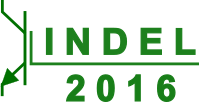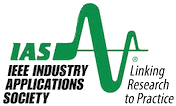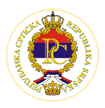Home
Call for Papers
Important Dates
Symposium Topics
Instructions for Authors
Committees
Registration
Programme
Keynote Speakers
Invited Papers
About Symposium
Travel Information
Accommodation
Photo Gallery
Sponsors
Links
Contact
XI International Symposium on Industrial Electronics - INDEL 2016
3-5 November 2016, Banja Luka, Bosnia and Herzegovina
The Symposium is sponsored by IEEE Industry Applications Society and IEEE Power Electronics Society
Keynote Speakers
Multi-Cell & Multi-Level Power Converters
A Way to Go Beyond The Limit of Si
Power electronics and static power converters play significant role in industrial applications, power generation and transmission, home appliance, transportation, etc., etc. Today, our life will be completely different without power electronics.
Power electronics, particularly power semiconductors are progressing on daily bases. Each new generation of power semiconductor introduces new challenges and issues. Some of them make almost impossible to fully utilize full advantages of new power semiconductor devices. Two of the challenges are high di/dt and dv/dt, which in combination with parasitic inductance and capacitance of the power semiconductor and converter create issues of over-voltage, radiated and conducted EMI emission, stress of the load isolation, etc., etc. The above mentioned issues (di/dt and dv/dt) will make impossible to fully utilize all the benefits of future Wide Band Gap devices such as SiC and GaN. New devices packaging is a must. But, where is the limit of a new package? Is it possible to solve the issue with a new package or something more is necessary to be done?
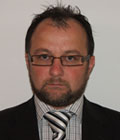
Dr. Petar J. Grbović
HUAWEI Technologies Dusseldorf GmbH
Munich, Germany
Dr. Petar J. Grbović received the Dipl. Eng. (B. Sc) and M.Sc. degrees from the School of Electrical Engineering, University of Belgrade, Serbia, in 1999 and 2005, and the Doctor (Ph.D) degree from the Laboratoire ’Électrotechnique et d’Électronique de Puissance de Lille, l’Ecole Centrale de Lille, France in 2010.
From March 1999 to February 2003, he was an R/D Engineer with RDA Co, Belgrade. From November 2000 to June 2001, he was a Consulting Engineer with CESET Italy (a division of Emerson Appliance Motors Europe). From March 2003 to April 2005, he was with the R&D Department, PDL Electronics, Ltd., Napier, New Zealand. Since April 2005 until July 2010 he was working with Schneider Toshiba Inverter Europe, Pacy-Sur-Eure, France, as Power Electronics Group Expert. Since September 2010 until August 2011 he was with General Electric Global Research, Munich, Germany. Since September 2011 he is with HUAWEI Technologies, Europe Energy Competence Center in Munich/Nuremberg, Germany, where he works as a Senior Expert in the area of power electronics and power conversion.
The focus of his research is on application of advanced energy storage devices, active gate driving for high power IGBTs and JFET SiC, power converter topologies, advanced power semiconductor devices and control of power converters and semiconductor switches.Dr. Grbović published over 30 IEEE conference/journal papers, 8 IEEE tutorials and a book “Ultracapacitors in power Conversion Systems: Analysis, Modeling and Design in Theory and Practice”. He has nine patents granted and eleven patent application pending. The focus of his research is on application of advanced energy storage devices, active gate driving for high power semiconductor switches, power converter topologies, advanced power semiconductor devices and control of power converters and semiconductor switches.
Multiphase Electric Machines – What Are They Good For?
Although multiphase (more than three phases) machines have been known for almost half a century, it is only in recent times that they are becoming more wide-spread in industrial applications. In addition to the obvious advantage of reducing the required power-per-phase and hence required semiconductor rating, multiphase systems offer a number of other advantages that make them suitable for specific niche applications. These all stem from the fact that, regardless of the number of stator phases, independent flux and torque control of an ac machine always requires only two independently controllable currents (two degrees of freedom). The remaining degrees of freedom can then be used for other purposes and this will be the subject of this presentation.
‘Classical’ (i.e. older) uses of additional degrees of freedom will be briefly addressed first, including the multi-motor multiphase series-connected drive systems with reduced-switch-count inverter supply, use of the additional degrees of freedom for the purposes of achieving fault-tolerant operation, and torque enhancement or torque ripple smoothing by low order stator current harmonic injection. Next, more recent applications of the additional degrees of freedom will be considered. This encompasses capacitor voltage balancing in machines with multiple three-phase windings and multiple three-phase converters connected in series, realisation of fully integrated on-board fast (three-phase) and slow (single-phase) battery charging systems in electric vehicles, a braking method for induction motor drives with diode front-end rectifier, and stator winding temperature estimation. Last but not least, use of different sub-windings in a single multiphase machine for simultaneous motoring/generating operation will be discussed. Basic concepts and illustrative examples will be provided throughout.
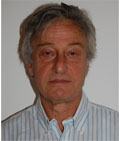
Prof. Dr. Emil Levi
Liverpool John Moores University
Liverpool, United Kingdom
Emil Levi received his BEng (1st Class Honours equivalent) in Electrical Engineering from the University of Novi Sad, Yugoslavia in 1982 and his MSc and PhD degrees from the University of Belgrade, Yugoslavia in 1986 and 1990, respectively. From 1982 till 1992 he was with the Dept. of Elec. Engineering, University of Novi Sad. He joined Liverpool John Moores University, UK in May 1992 and is since September 2000 Professor of Electric Machines and Drives.
Emil is a Fellow of the IEEE (Class of 2009). He served as a Co-Editor-in-Chief of the IEEE Trans. on Industrial Electronics in the 2009-2013 period and is currently Editor-in-Chief of the IET Electric Power Applications and an Editor of the IEEE Trans. on Energy Conversion. He is the recipient of the Cyril Veinott award of the IEEE Power and Energy Society for 2009 and the Best Paper award of the IEEE Trans. on Industrial Electronics for 2008. In 2014 he received the “Outstanding Achievement Award” from the European Power Electronics (EPE) Association.
